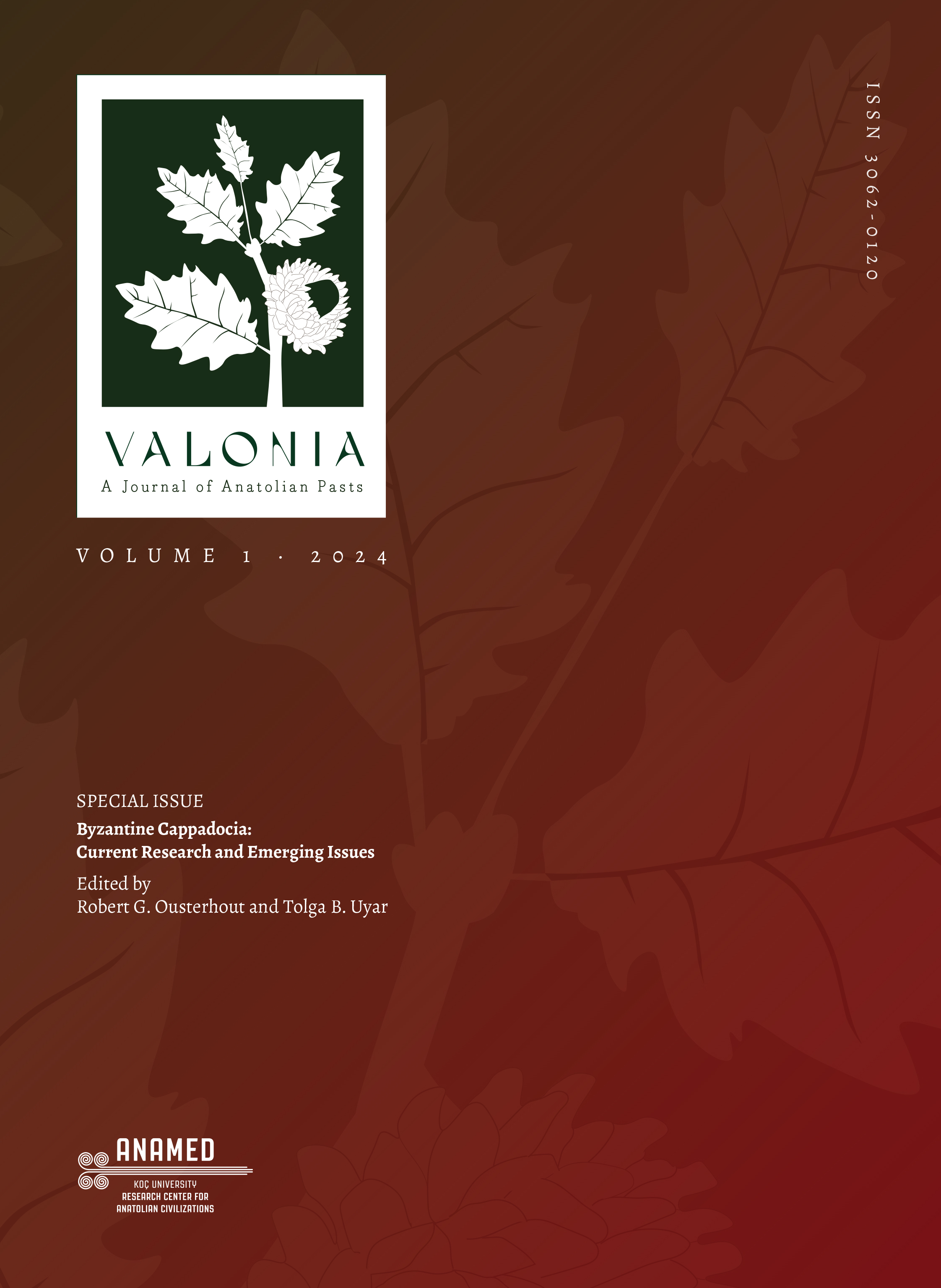
All articles in Valonia: A Journal of Anatolian Pasts are licensed under a Creative Commons Attribution-NonCommercial-NoDerivatives License.
Cappadocia: Old Questions, New Approaches – A Historian’s Perspective
John HaldonPrinceton UniversityCappadocia has been a focus for historians of the Byzantine world and of Anatolia for many decades, a reflection both of its very distinctive landscape and geography as well as its importance as a “peripheral” province. Its so-called “underground cities”—numbering over 200 known sites—make it hardly surprising that Cappadocia has attracted the attention of historians, archaeologists, and more recently mass tourism. Research into the cultural history and the archaeology of the region has depended on well-established, tried-and-tested approaches rooted in the traditions of art and architectural history, textual analysis, and archaeological survey, with occasional excavation. From the 1940s and 1950s, improvements in natural scientific dating techniques helped to expand archaeological and scientific research horizons; but, in the last two decades, a revolution in both methods and approaches has greatly improved our knowledge of all aspects of Cappadocian history. Reflecting advances in fields such as numismatics and sigillography or shifts in method and approach among historians of late Roman and Byzantine art and architecture, it also results from increasing interest in broad-brush archaeological field survey aimed at capturing settlement profiles, as well as the landscape history of a region. More broadly, there has been a dramatic expansion in the technologies of data capture, processing, and interpretation relevant to the ancient environment, ecology, and climate of the region, as well as the development of new ways of working and integrating different specialisms that can be applied to historical and archaeological research. The application of an integrated approach combining traditional with up-to-the-minute methods and techniques has meant that, for Byzantine history in particular, Cappadocia has become something of a testing ground for new approaches to old questions. This brief introductory survey aims to describe these developments and provide a framework for the chapters that follow.
Keywords: collaborative work, interdisciplinarity, new technologies, proxy data, pollen, Lake Nar, paleoenvironmental research
Cappadocia: Old Questions, New Approaches – A Historian’s Perspective
John HaldonPrinceton ÜniversitesiKapadokya hem kendine özgü peyzajı ve coğrafyası hem de önemli bir “periferik” eyalet olması nedeniyle Bizans ve Anadolu tarihçilerinin uzun yıllar boyunca ilgi odağı olmuştur. 200’ü aşkın yerleşmeden bilinen “yeraltı şehirleri” ile Kapadokya'nın tarihçiler, arkeologlar ve son yıllarda kitle turizminin dikkatini çekmesi şaşırtıcı değildir. Bölgenin kültürel tarihi ve arkeolojisine yönelik araştırmalar, sanat ve mimarlık tarihi geleneklerinden, metinsel analiz, arkeolojik yüzey araştırmaları ve belirli kazılardan beslenen tecrübe ile sabit köklü yaklaşımlar üzerine inşa edilmiştir. 1940'lar ve 1950'ler itibarıyla bilimsel tarihleme yöntemlerinde meydana gelen gelişmeler, arkeolojik ve bilimsel araştırmaların ufkunu genişletmiştir. Bununla birlikte, son yirmi yılda hem yöntem hem de yaklaşımlarda yaşanan devrim, Kapadokya tarihinin bütünsel olarak anlaşılmasına büyük bir katkı sağlamıştır. Numismatik ya da mühürbilim gibi alanlardaki gelişmeleri veya Geç Roma ve Bizans sanatı ve mimarisi çalışan tarihçilerin kullandığı yöntem ve yaklaşımlardaki dönüşümleri yansıtan bu ilerlemeler, bölgenin peyzaj tarihi ve yerleşme profillerini anlamayı hedefleyen geniş kapsamlı arkeolojik saha araştırmalarına yönelik ilginin artmasıyla da ilişkilidir. Dahası, bölgenin geçmişteki çevresi, ekolojisi ve iklimine ilişkin veri toplama, işleme ve yorumlama teknolojilerine ek olarak tarihi ve arkeolojik araştırmalara uygulanabilecek farklı uzmanlıkların bir araya getirilmesi ve yeni çalışma yolları geliştirilmesinde çarpıcı bir ilerleme kaydedilmiştir. Geleneksel yöntem ve teknikleri, güncel yöntem ve tekniklerle harmanlayan bütünleşik bir yaklaşımın benimsenmesi, Kapadokya’yı—bilhassa Bizans tarihi özelinde— eski soruların yeni yaklaşımlarla ele alındığı bir laboratuvar haline getirmiştir. Bir giriş niteliğinde olan bu kısa araştırma, söz konusu gelişmeleri tanımlamayı ve müteakip çalışmalar için bir çerçeve oluşturmayı hedeflemektedir.
Anahtar Kelimeler: ortak çalışma, disiplinlerarasılık, yeni teknolojiler, proxy verileri, polen, Narlıgöl, paleoçevresel araştırma
Manuscript Language: English


